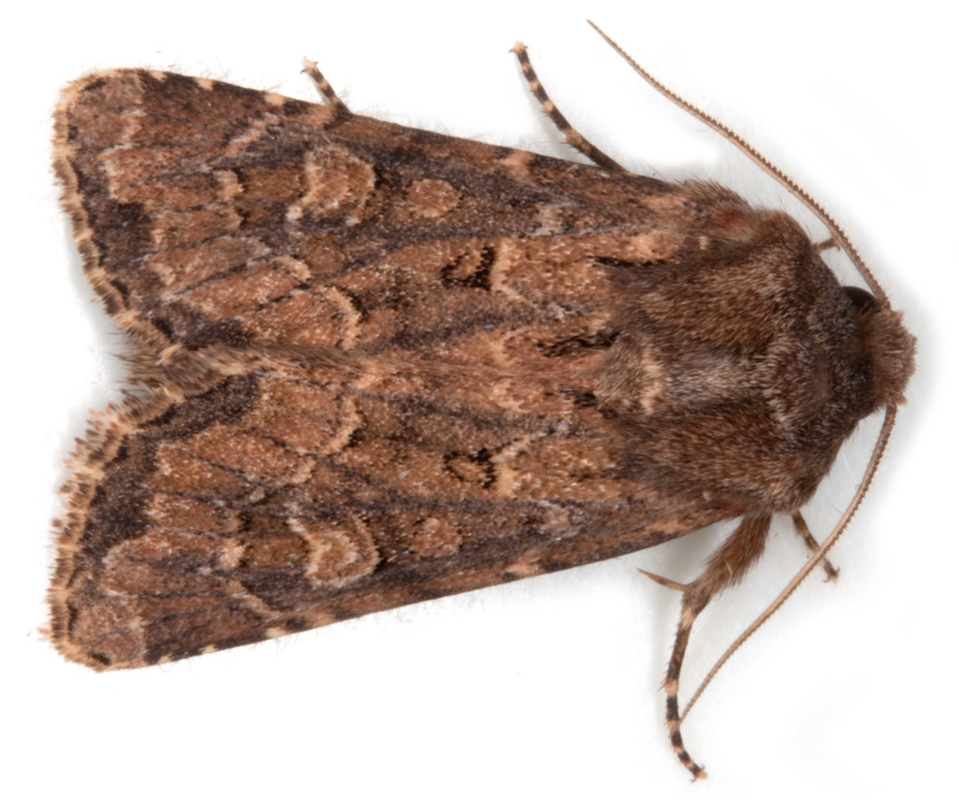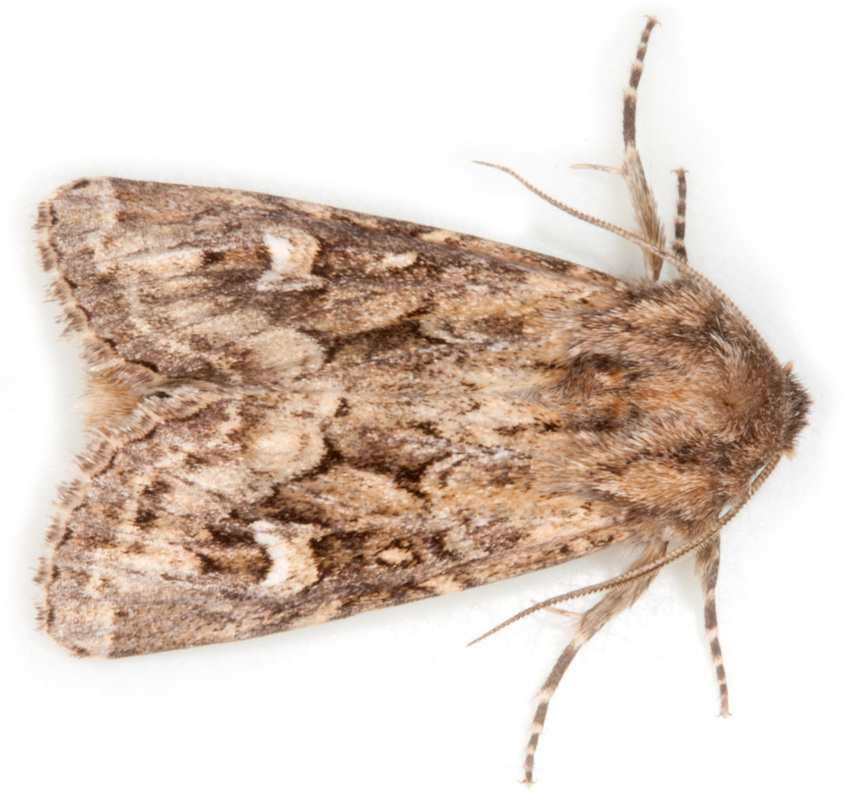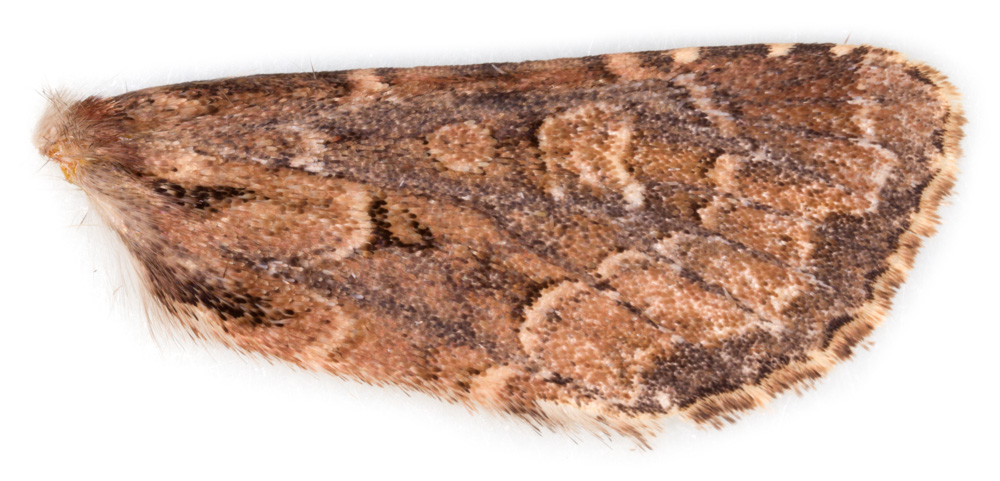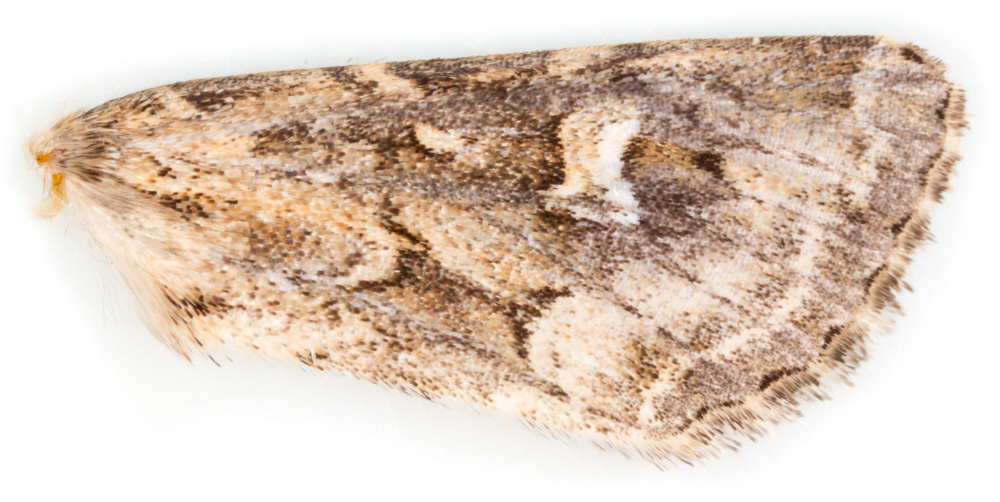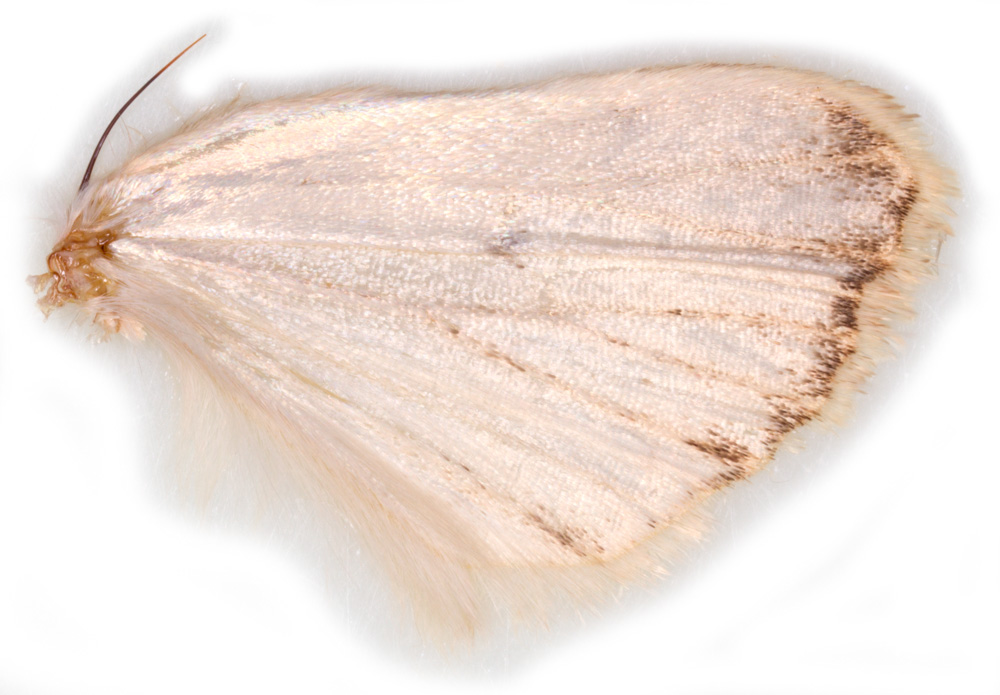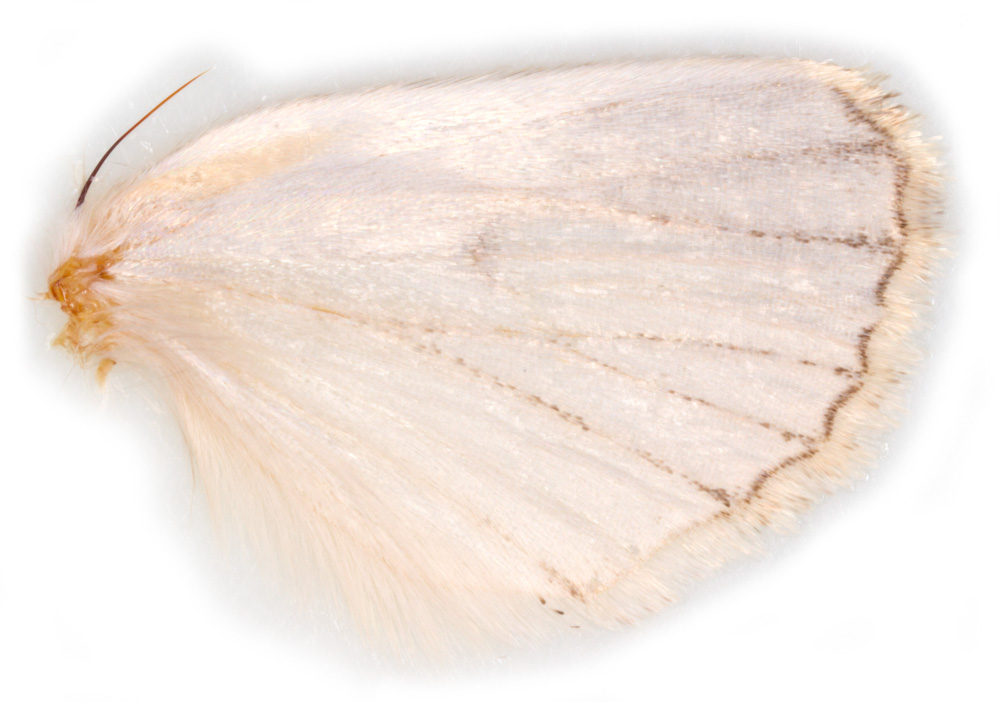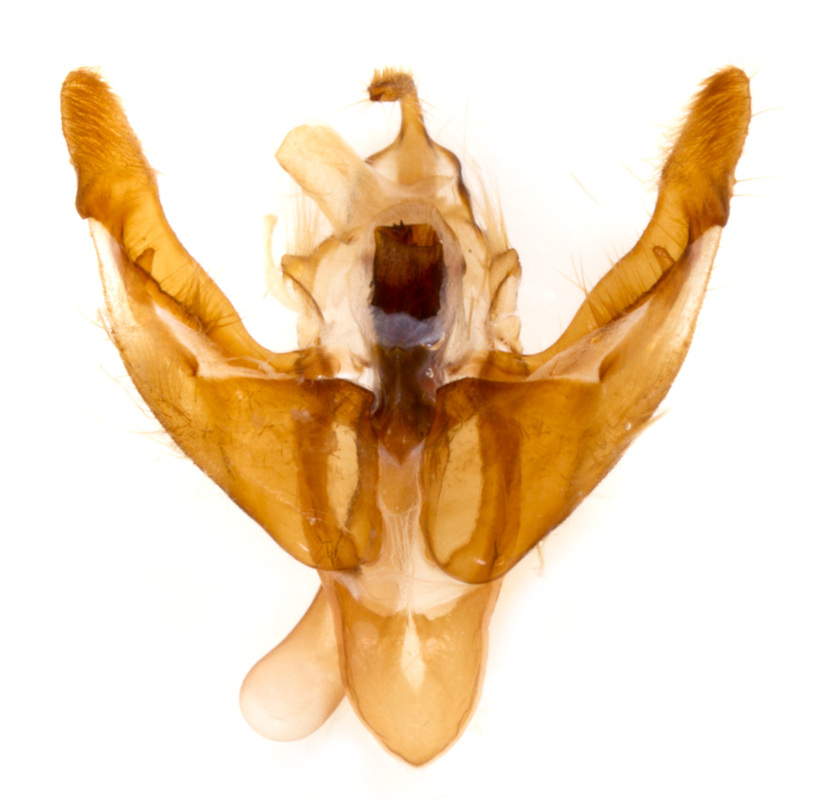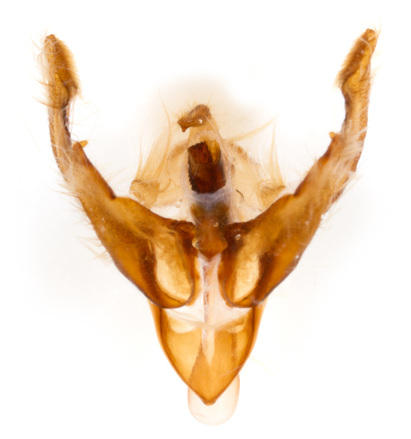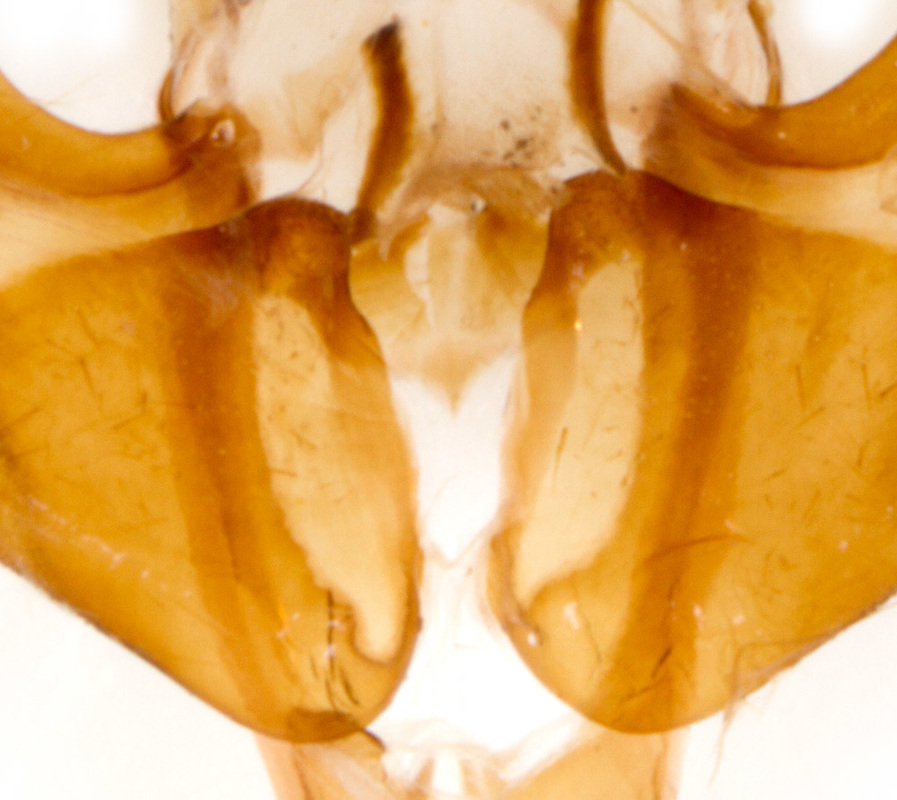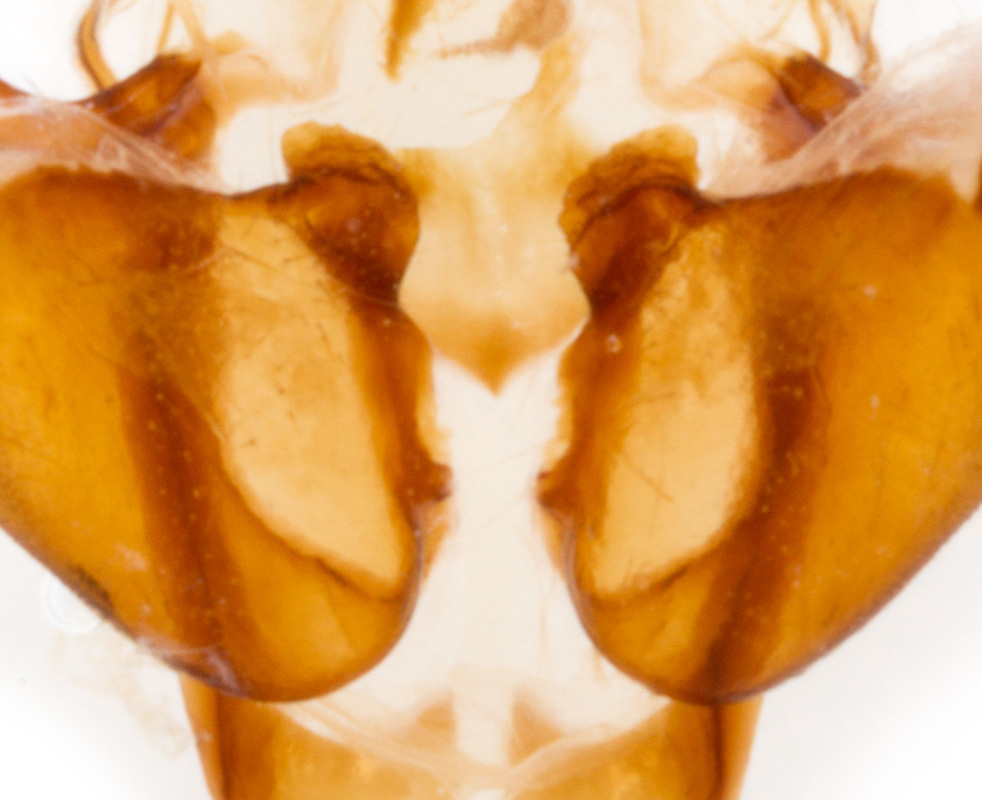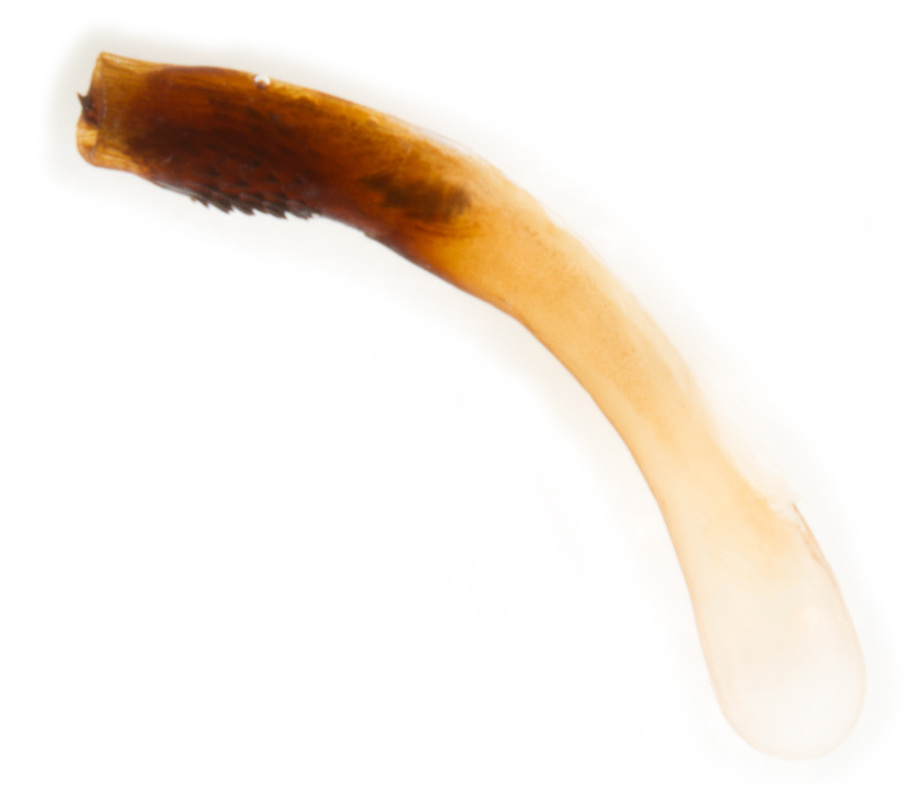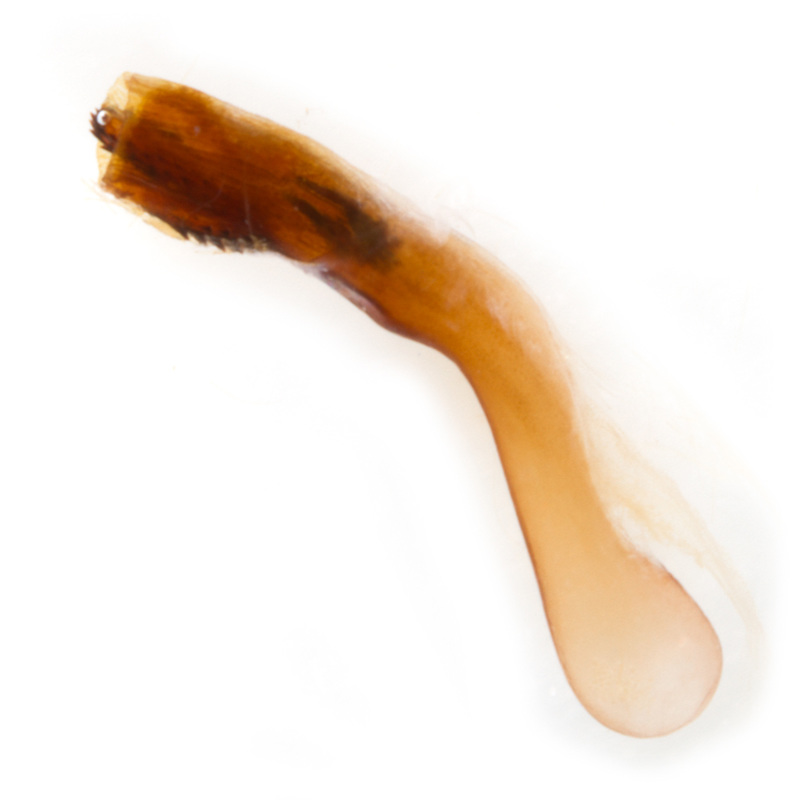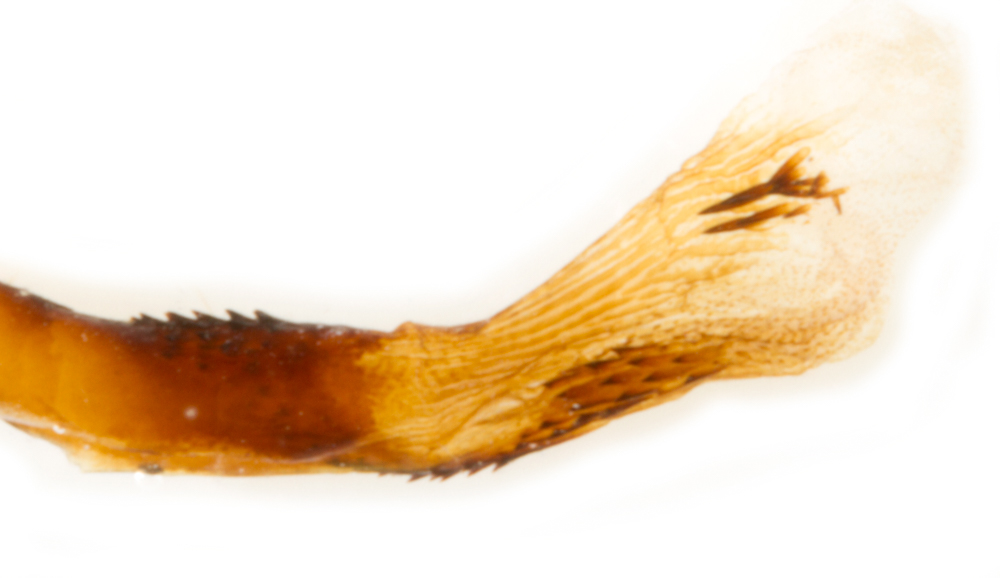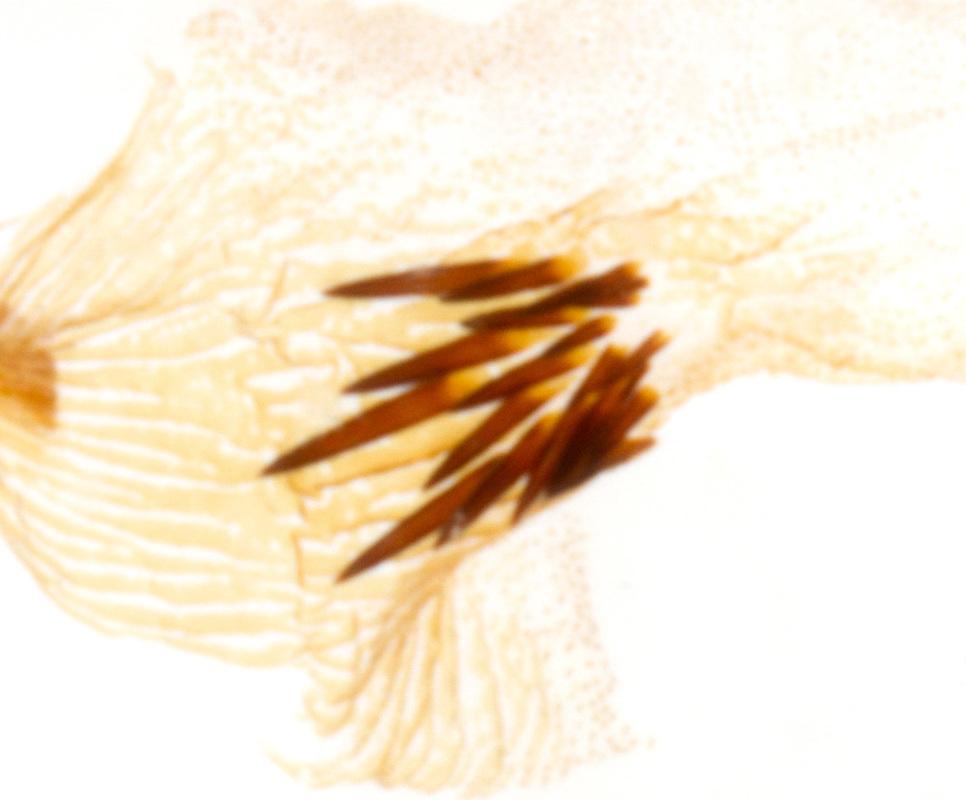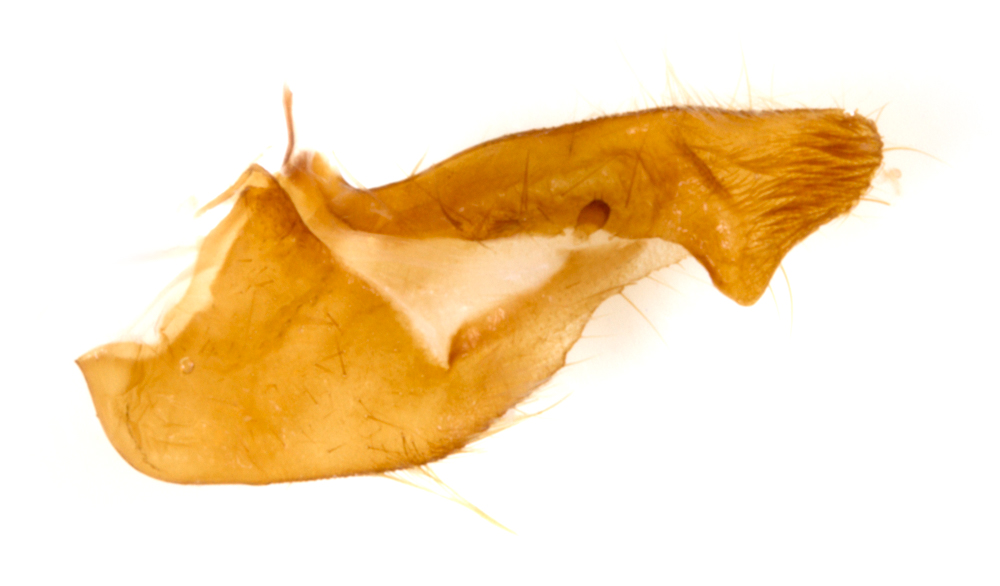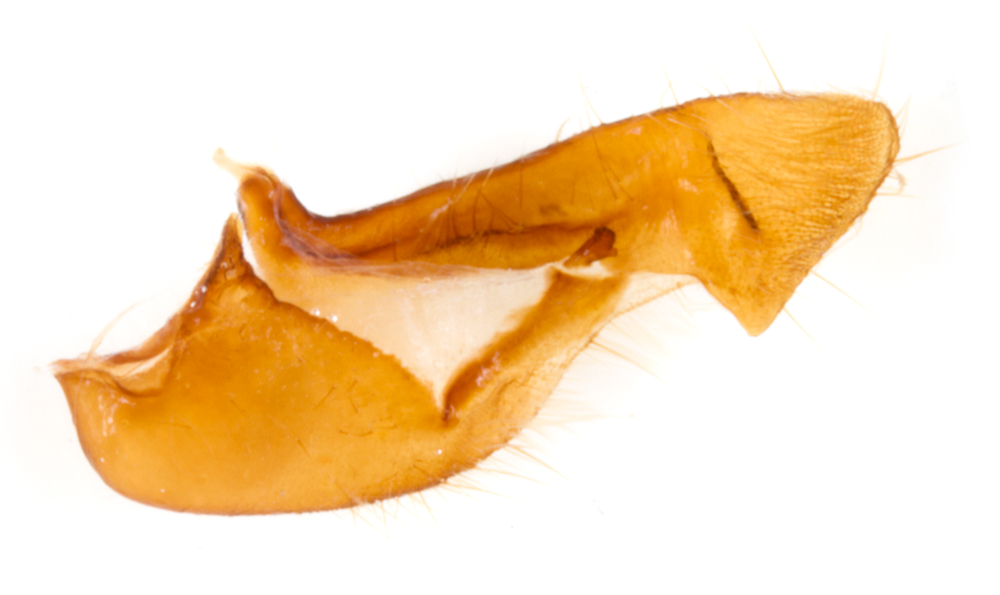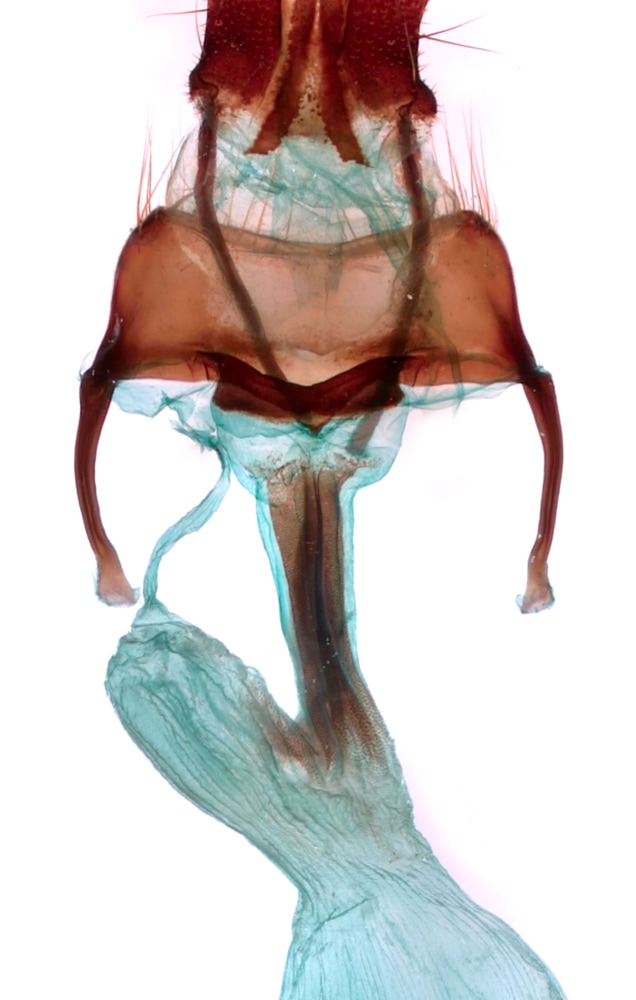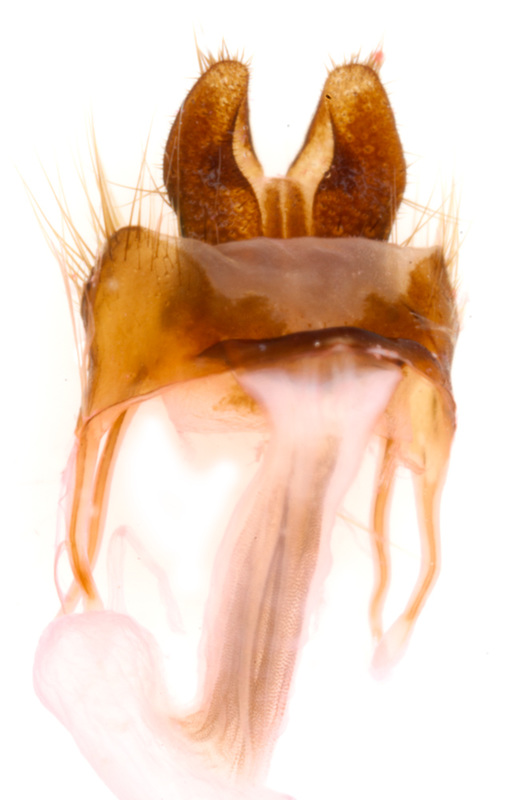Luperina |
Separation of L.testacea and L.nickerlii
These two species are very similar and both are very variable. They are similarly sized and have the same flight season.
All the images on this page are taken from the same 4 specimens (L.testacea male §1 and female §2, L.nickerlii male §1 and female §2)
A. Distribution
L.testacea occurs throughout GB while L.nickerlii occurs very locally at a few coastal sites - so away from these sites it should be L.testacea.
The distribution of L.nickerlii subspecies is as follows:
This page largely concerns the separation of ssp demuthi from L.testacea
B. Forewing upperside
Specimens that may be L.nickerlii should show a very small round oval and a white-outlined kidney mark. According to MBGBI10 L.testacea is always courser textured, with a warmer ochreous-brown ground colour, a larger oval and the kidney mark is not white-outlined. However, ssp demuthi was not described until 1995 and so was not considered in MBGBI10. It is not clear to me to what extent these distinctions apply to that subspecies.
These two species are very similar and both are very variable. They are similarly sized and have the same flight season.
All the images on this page are taken from the same 4 specimens (L.testacea male §1 and female §2, L.nickerlii male §1 and female §2)
A. Distribution
L.testacea occurs throughout GB while L.nickerlii occurs very locally at a few coastal sites - so away from these sites it should be L.testacea.
The distribution of L.nickerlii subspecies is as follows:
- demuthi: Thames Estuary, Essex and Suffolk;
- gueneei: Newborough Warren, Anglesey, N.Wales, Cheshire, Lancashire;
- leechi: one sandy shingle beach on the Lizard peninsula in S.Cornwall.
This page largely concerns the separation of ssp demuthi from L.testacea
B. Forewing upperside
Specimens that may be L.nickerlii should show a very small round oval and a white-outlined kidney mark. According to MBGBI10 L.testacea is always courser textured, with a warmer ochreous-brown ground colour, a larger oval and the kidney mark is not white-outlined. However, ssp demuthi was not described until 1995 and so was not considered in MBGBI10. It is not clear to me to what extent these distinctions apply to that subspecies.
C. Hindwing upperside
In L.testacea the hindwing may be white, brownish-white or occasionally grey; the termen is marked by a fine dark line and the veins are often darkened. In L.nickerlii the hindwing is usually silky white, but in ssp demuthi it may have brownish edges. It is not clear to me that ssp demuthi can be reliably separated on hindwing markings; the image of L.nickerlii (below) does, however, show a silkier texture.
In L.testacea the hindwing may be white, brownish-white or occasionally grey; the termen is marked by a fine dark line and the veins are often darkened. In L.nickerlii the hindwing is usually silky white, but in ssp demuthi it may have brownish edges. It is not clear to me that ssp demuthi can be reliably separated on hindwing markings; the image of L.nickerlii (below) does, however, show a silkier texture.
D. Male genitalia
Illustrated for both species but not described in MBGBI10 p227; differences described at Moth Dissection and images available for L.testacea (at the time of writing the images for L.nickerlii are not available). The described differences are as follows, features of L.testacea given first:
The ventral surface of the aedeagus is the the concave side and the distinction can only be seen in a lateral view of the aedeagus; as far as I can see L.testacea may show a small swelling, so this difference between the species may be relative rather than absolute.
The projection from the saccus appears to be in a mostly dorsal direction so may not be apparent in the standard ventral view - it is not yet clear to me that this is a reliable feature.
It would be useful to know the range of number of spines for each species and whether they overlap - without this knowledge the relative difference is less helpful. So far I have found 11-13 of variable size in L.testacea and 18 mostly robust in L.nickerlii
The everted aedeagus can be made to adopt virtually any shape you want and the difference indicated is not clear from the images available.
Unfortunately the images of the armature in MBGBI show features of the clavus and saccus the other way round, so I have assumed that these illustrations have been transposed - although the aedeagus appears to be correctly labelled.
Illustrated for both species but not described in MBGBI10 p227; differences described at Moth Dissection and images available for L.testacea (at the time of writing the images for L.nickerlii are not available). The described differences are as follows, features of L.testacea given first:
- Clavus: simple, angled, less chitinised vs complex, produced and rounded, more chitinised
- Aedeagus: without ventral swelling vs with ventral swelling
- Saccus without projection at apex vs with projection at apex
- Fewer (cornutal) spines present vs more spines present
- Everted aedeagus without extension vs with extension
The ventral surface of the aedeagus is the the concave side and the distinction can only be seen in a lateral view of the aedeagus; as far as I can see L.testacea may show a small swelling, so this difference between the species may be relative rather than absolute.
The projection from the saccus appears to be in a mostly dorsal direction so may not be apparent in the standard ventral view - it is not yet clear to me that this is a reliable feature.
It would be useful to know the range of number of spines for each species and whether they overlap - without this knowledge the relative difference is less helpful. So far I have found 11-13 of variable size in L.testacea and 18 mostly robust in L.nickerlii
The everted aedeagus can be made to adopt virtually any shape you want and the difference indicated is not clear from the images available.
Unfortunately the images of the armature in MBGBI show features of the clavus and saccus the other way round, so I have assumed that these illustrations have been transposed - although the aedeagus appears to be correctly labelled.
A close up of the base of the sacculus is shown in the images below. The most apparent difference is that the clavus is produced in a dorsal direction in L.nickerlii (right) but not in L.testacea (Left). I am not convinced by any difference in angulation or chitinisation.
In this specimen of L.testacea (above left) there is a small hump on the ventral surface just proximal to the spiny portion of the tunica, with a fairly smooth curve of the ventral 'edge' proximal to the hump. In L.nickerlii (right) the hump is more prominent - but a more obvious difference to my eye is that the ventral 'edge' has a distinct angle immediately proximal to the hump and is then fairly straight to the base. These images also show a relative difference in size of the cornutal cluster (larger in L.nickerlii). The everted vesicae showing the cornuti are in the images below. In these specimens L.testacea has ~13 cornuti, 6 of which are quite small and L.nickerlii has 18 nearly all of which are substantial.
Differences in the valva are not mentioned by Moth Dissection but are illustrated in MBGBI10 (albeit labelled the wrong way round). Note that in the images below the features of the clavus seem less apparent in the detached valva. In L.nickerlii (right) the cucullus is broader with a more angular ventral projection and the ampulla is slightly longer.
E. Female genitalia
Comparative images are shown at Moth Dissection. A consistent difference in the shape of the ostium is suggested. The images show a concave ostial margin in L.testacea, convex in L.nickerlii. These differences are confirmed in the images shown below.
Comparative images are shown at Moth Dissection. A consistent difference in the shape of the ostium is suggested. The images show a concave ostial margin in L.testacea, convex in L.nickerlii. These differences are confirmed in the images shown below.
Luperina dumerilii (Dumeril's Rustic)
Characterised by an obliquely elongate oval mark in the forewing and a sharply angled ventral projection from the cucullus in the male genitalia.
Characterised by an obliquely elongate oval mark in the forewing and a sharply angled ventral projection from the cucullus in the male genitalia.
Page published 08/02/2016
